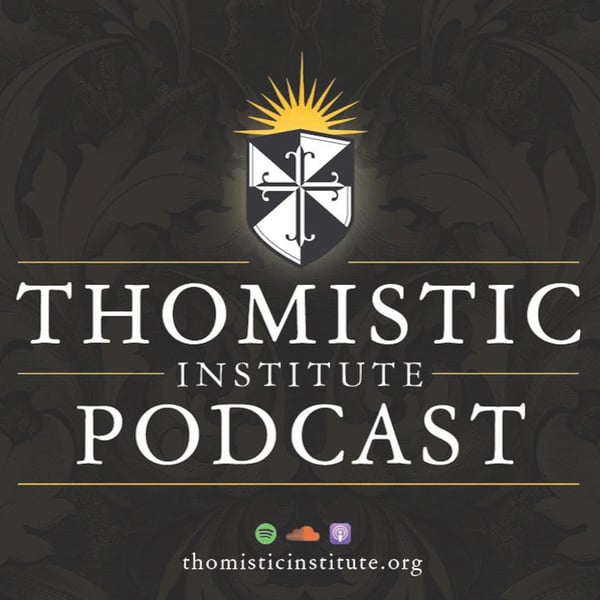He Is Risen: God’s Mercy and the Resurrection Appearances of Jesus | Fr. Jordan Schmidt, O.P.
The Thomistic Institute
The Thomistic Institute
4.8 • 729 Ratings
🗓️ 7 May 2020
⏱️ 61 minutes
🧾️ Download transcript
Summary
This talk was livestreamed from the Dominican House of Studies in Washington, D.C., as part of the Thomistic Institute's Quarantine Lecture series.
For more information on the Quarantine Lectures and to subscribe, visit us online: thomisticinstitute.org/quarantine-lectures.
Transcript
Click on a timestamp to play from that location
| 0:00.0 | On April 30th in the year 2000, the second Sunday of Easter, Pope John Paul II, St. John Paul |
| 0:09.3 | the second, somewhat unexpectedly took the opportunity of St. Faustina's canonization to proclaim |
| 0:16.6 | that the second Sunday of Easter would henceforth be established as the Feast of the Divine Mercy |
| 0:22.6 | to be celebrated in perpetuity by the Universal Church. |
| 0:27.9 | Since tonight's lecture is situated in between our celebration of the Sunday of the Lord's resurrection |
| 0:33.7 | and our celebration of the divine mercy, I thought it might be appropriate, therefore, |
| 0:39.8 | to consider the relationship between these two realities. In particular, I would like to examine |
| 0:46.3 | how the appearances of our Lord and Savior Jesus Christ in his resurrected body serve to manifest |
| 0:53.6 | to us God's mercy. |
| 0:57.0 | In order to do this, I will begin with a few brief preliminary remarks about how popular |
| 1:04.0 | conceptions and manners of speech about mercy inform our thought about what mercy is. Next, in a more substantial section, I will examine |
| 1:14.5 | some basic tenets of God's mercy as they are presented in the Old and New Testaments. |
| 1:20.8 | I will then proceed to a presentation of Thomas's account of mercy that takes into account these conceptions of mercy and justice as they |
| 1:31.7 | are found in the Old Testament and the New Testament, but also how he develops them. Finally, I will |
| 1:38.8 | briefly examine the resurrection appearances in John 20 and offer an interpretation that addresses how they qualify as works of God's mercy |
| 1:49.1 | according to the Thomistic model. |
| 1:52.6 | So our first task tonight then is to determine what we mean when we speak about mercy. |
| 2:04.6 | Anecdotally speaking, it seems to me that many people, even believers who acknowledge the biblical insight that |
| 2:08.6 | God is a merciful God, think and speak about mercy |
| 2:13.6 | as a reality that pertains primarily to human behavior. More specifically, mercy is often |
| 2:21.5 | used in common parlance as a synonym of either forbearance or compassion. So the judge shows mercy |
| 2:31.3 | when he commutes the sentence of one convicted of a crime, or the passerby shows |
... |
Please login to see the full transcript.
Disclaimer: The podcast and artwork embedded on this page are from The Thomistic Institute, and are the property of its owner and not affiliated with or endorsed by Tapesearch.
Generated transcripts are the property of The Thomistic Institute and are distributed freely under the Fair Use doctrine. Transcripts generated by Tapesearch are not guaranteed to be accurate.
Copyright © Tapesearch 2025.

